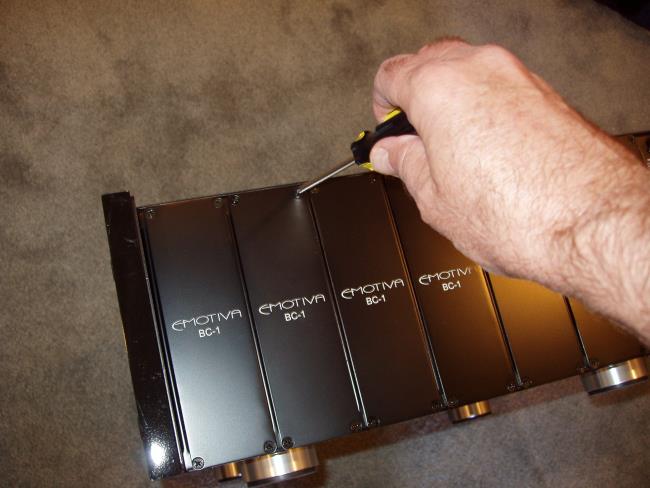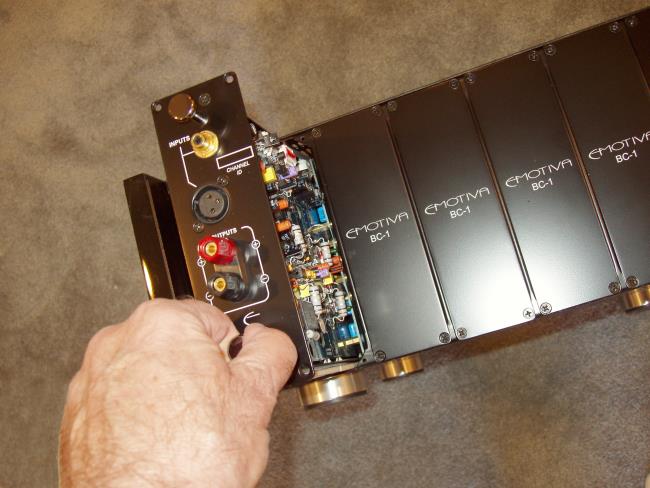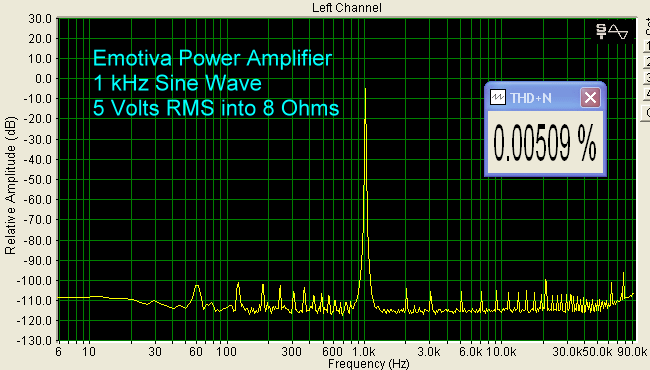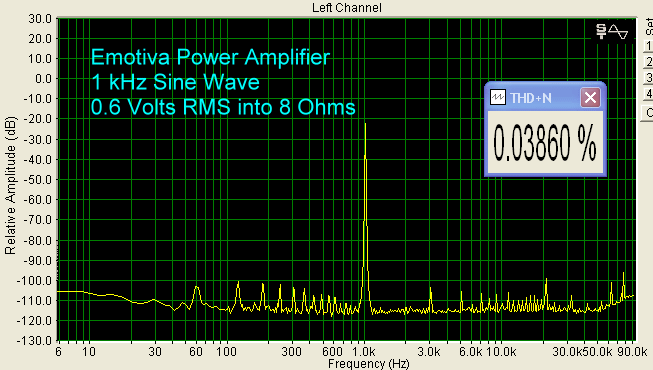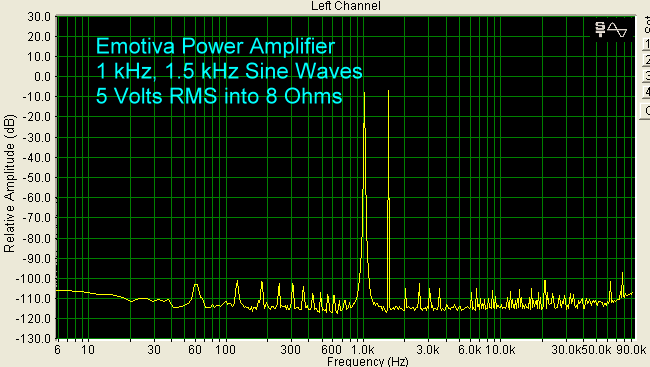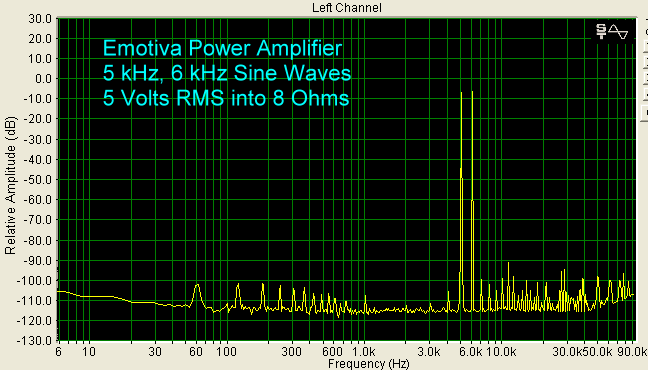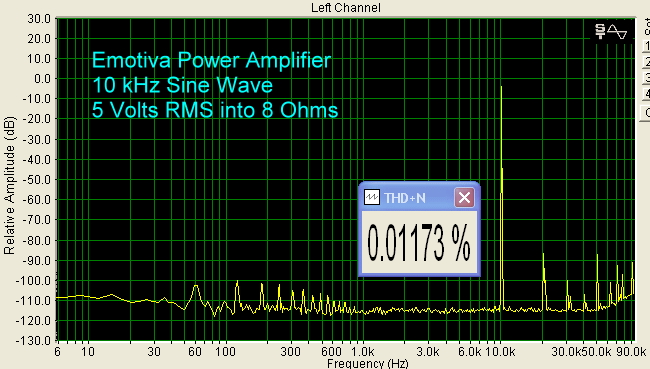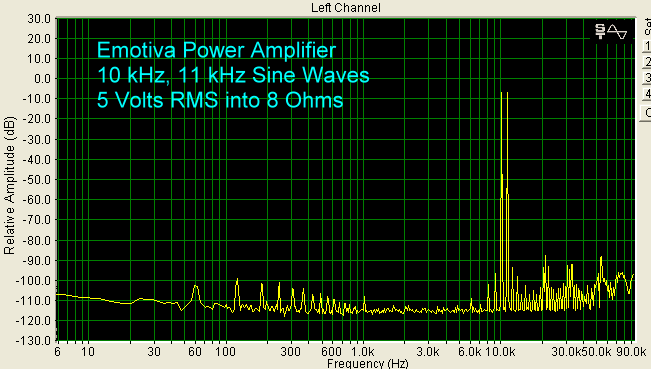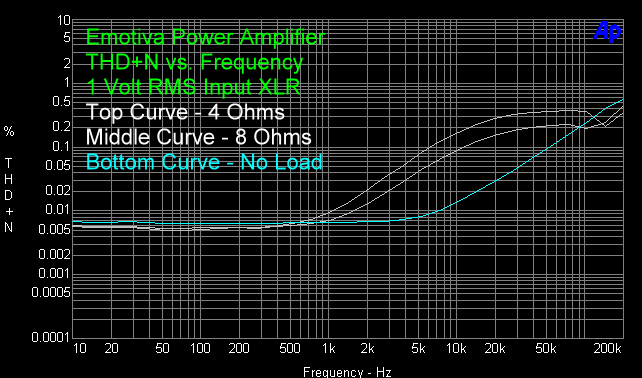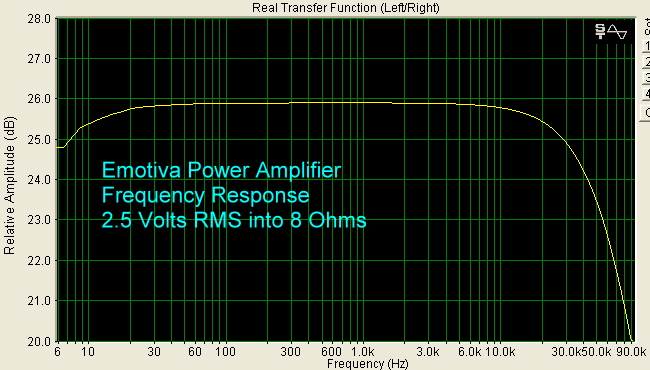|
||||||
|
On the Bench (JEJ) The DMC-1 was backordered (apparently a lot of people ordered them before they even arrived at AV123), so I could not get an extra one in time to bench test it for the review, but I did get the MPS-1. Frankly, this is one of the most beautifully laid out modular power amplifiers that I have ever seen. Each amplifier module comes in its own box, so you can learn how the amplifier is assembled in case you ever need to add, repair, or replace a module. And, it's easy. One module weighs about 12 pounds, so when you assemble the seven-channel package, it weighs 84 pounds, plus the chassis, for a total of 115 pounds. I don't know about you, but I find that lifting a 115 pound amplifier onto an equipment rack to be a strain, and I tore some shoulder cartilage a few years ago moving a big power amp, so what I suggest for the MPS-1 is to put the chassis on your rack, turn the rack around or slide the chassis around so the rear side is facing you, and slide each module in with the chassis already in place. Here is how a module is inserted (I stood the chassis on end for the photos). First, you remove the four screws that attach the cover plate for each module.
Then, after unpacking the module (don't forget to remove the moisture absorption packet that is stuffed into one end of the module), and holding on to the mounting knobs, you slide the module into the open slot. Be sure to slide it in right side up.
Finally, you put the four screws back in. I had some difficulty with this, as the AC socket at the end of the module moves the module slightly, so you have to push the mounting knobs in order to have the screw holes line up exactly. I would like to see the use of thumb screws here, with the screw holes in the module panel slightly larger, so that even if the chassis screw holes are slightly off center, the screws will go in without any problem.
OK, so here are the bench test results. I used the XLR balanced input for the tests. At 1 kHz, and 5 volts output, THD+N was a very low 0.005%. S/N was 95 dB, which means you will hear nothing but the music.
Even at 0.6 volts output, THD+N was less than 0.04%. This is really quite good.
At 1 kHz and 1.5 kHz, the A+B IMD peak at 2.5 kHz was at - 95 dB, and the B-A peak at 500 Hz was at - 102 dB. This represents 0.0014% IMD for those two peaks.
At 5 kHz and 6 kHz, A+B (11 kHz) was at - 92 dB and B-A (1 kHz) was at - 101 dB, for 0.0019% IMD.
With a 10 kHz sine wave input, THD+N was 0.01%.
IMD for the A+B and B-A peaks, using 10 kHz and 11 kHz input signals, was 0.0071%.
Here is a THD+N vs. Frequency graph, showing that with both 8 ohm and 4 ohm loads, THD+N stays very low up to 1 kHz and then begins to rise to 0.2 - 0.3% THD+N at 50 kHz. The curve on the bottom (blue) is with no load. The 1 volt RMS input for this test delivered 50 watts into 8 ohms at 1 kHz.
This graph, below, represents an industry standard SMPTE/DIN test, with 2 kHz and 60 Hz sine wave input signals, at a 4:1 ratio. This test measures IM distortion. We will have more to say about this particular measurement as we accumulate data for additional amplifiers.
Shown below is a THD+N vs. Power Output graph for an 8 ohm load and a 4 ohm load. You can see that distortion starts out between 0.1% and 0.2% at 100 mw output, then declines to a low at 0.007% to 0.01% before climbing to the clipping level (1%) at maximum output.
The measured frequency response of the MPS-1 was 20 Hz - 20 kHz ± 0.25 dB.
I measured a maximum output from the module of 210 watts RMS into 8 ohms. That is 5% above specification. Each module is completely independent of the others, so your output will only be limited by the voltage drop from your AC socket.
At two thousand dollars for seven channels x 200 watts,
the bench test results of the MPS-1 are so good, they are scary. The Emotiva DMC-1 surround sound processor and MPS-1 multi-channel amplifier pair are big, bold, and beautiful. The extensive features and the solid performance that they offer are hard to beat at their price point. And they can even challenge products from the higher priced competitors.
If you are in the market for an SSP or an amplifier, you owe it to yourself to give these
units a listen. No doubt, this pair offers an unprecedented value in
surround-processor/multi-channel amplifier combination. Kudos to AV123.com
for coming up once again with such wonderful products!
|
||||||

